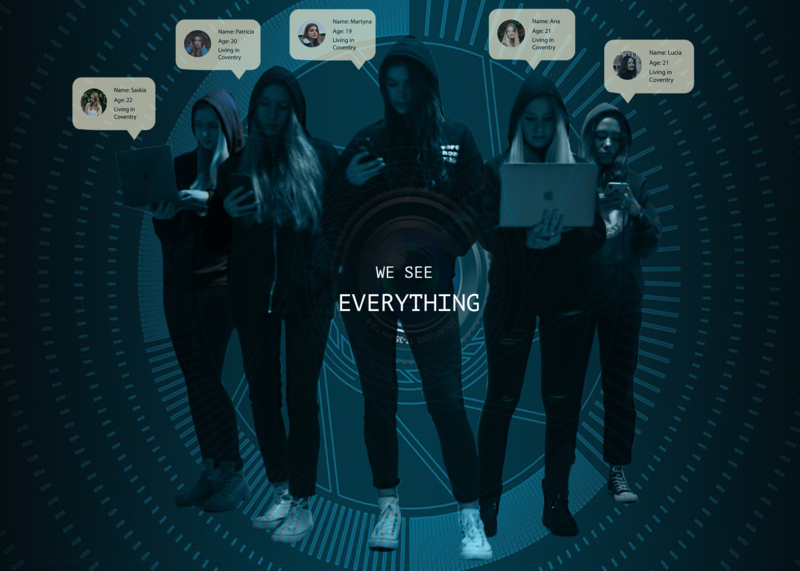With the massive shift to working from home we now see a plethora of tech companies flogging new employee surveillance tools. You can readily see their appeal to command-and-control thinkers. If you think, as they do, that managing employee activity is crucial, then to know who’s doing things and who’s taking the mickey is grist to their mill. But these tools will undermine performance and morale.
Think about it from the employee’s point of view. Your boss can see your emails, any documents you read or create, your appointments, who you talk to, and when; can listen to or read transcriptions of your calls. Your boss can see your computer screen, can monitor your internet use, the sites you visit and for how long. Your boss can even turn on your camera and watch you at work.
How would you like to be that employee?

To compound the terror, these surveillance tools are then used to calculate what the tech vendors describe as your daily productivity score. Utopia for the command-and-control manager, but, in truth, a dystopian nightmare; the fear engendered by having someone watch everything you do is compounded by the necessity to comply with their measures to survive and prosper. But do those measures have any bearing on what you should be doing?
Clearly many managers learn nothing. Thirty years ago management invented call centers. They quickly earned the sobriquet ‘sweat shops’. Why? Because employee surveillance was demoralizing. In those days surveillance was limited to activity measures; today’s tech reaches to your inside-leg measurement. Despite the bad press, call centre managers kept their measures, for it was all they knew to do, and invested in bean bags, table tennis, neck massaging and the like to make unhappy people happier. These palliatives won’t be on the list of remedies for today’s dysfunction, with everyone working from home, who knows what will be dreamt up.
But dysfunction there will be. This ‘new normal’ in surveillance will increase fear, will increase stress, we can only expect increases in sickness, absence and employee turnover. As Sarah O’Connor wrote in the FT: “A body of research suggests jobs that combine high demands (concentration requirements, workload, time pressure) and low control (discretion to make decisions and schedule one’s own work) are ruinous for human health.” It is easy to see why.
What’s galling is that employee surveillance is sold as ‘productivity intelligence’ software. Nothing could be further from the truth. Surveillance will not provide intelligence, nor is managing activity a means to productivity. It’s a typical tech intervention; the techies think about what tech can do; the wrong place to start. They exploit technology’s new features and sell them as benefits.
Going back to call centers, the good news is not all managers kept their usual measures. Every leader we have worked with knows why activity measures have to be removed as targets for workers. Not just because they demoralize people but because they have no value in understanding and improving performance and, further, they hold performance back. What the leaders have also understood is that they need better measures with a better purpose. They understood these things because they started in a different place, they studied their system. Now that is intelligence; certainly its knowledge.
In that vein what needs to be ‘under surveillance’ is the way the work works, not what the worker does. It starts with understanding demand in customer terms, rather than treating it as simply work to be done. Second is achievement of purpose in customer terms – how well you deliver what the customer wants, third is how well you focus on the value work – doing only what actually matters to customers. When these three controls are in the hands of workers and their managers, performance improves, dramatically.
Another way to think about it is through the frame of motivation theory. The research shows three ingredients are necessary for people to be intrinsically motivated, to take pride in their work, to experience joy at work: autonomy, mastery and purpose. All carrots and sticks removed. The relationship between managers and workers improves immediately for they are now bound together in a common purpose with common measures, and the aim to improve on these measures every day.
And this is where the tech community should start, by understanding what good service design looks like and working out how tech can help create the three fundamental controls in a fashion that works for their users – managers and workers. And it should be designed as autonomation – where the workers and managers control the tech, rather than the tech controlling them. It would be of outstanding economic value, a rare and noteworthy event in the tech world.
Author: John Seddon, Author of Beyond Command and Control & Professor at Buckingham University
John Seddon is a management thinker and commentator, and currently a visiting professor at Buckingham University Business School. His latest book Beyond Command and Control is a detailed account of how leaders of service organizations have changed the way they think about the design and management of their organizations and achieved profound results.